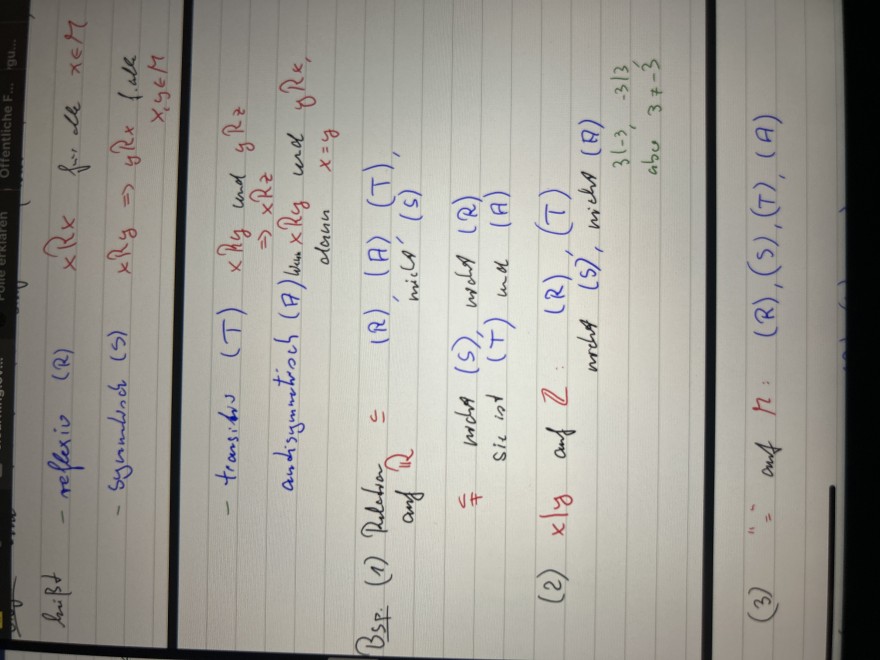Aufgabe: Warum ist die Relation < auf IR antisymmetrisch?
Problem/Ansatz:
Antisymmetrisch bedeutet ja xRy und yRx impliziert x=y jedoch kann dieser Fall nie auftreten, aber warum ist die Relation dann trotzdem Antisymmetrisch?
Liegt es daran das das eine Implikation ist und der erste Teil nicht auftreten kann, weswegen wir davon trivial als antisymmetrisch ausgehen?
Text erkannt:
hist - reflexiv (R) \( \quad x R x \quad \) fin de \( x \in M \)
\( \begin{array}{r} - \text { synmoling (S) } \quad x R y \Rightarrow y R x \quad \text { (wae } \\ x, y \in M \end{array} \)
- transidu (T) \( \times R_{y} \) und y \( R_{z} \)
\( \Rightarrow x R_{z} \)
antisymmetrisch (A) Wen \( x R y \) and \( y R x \), dann \( x=y \)
Bsp. (1) \( \underset{\substack{\text { Pulcitia } \\ \text { and } \mathbb{R}}}{\text { and }(\mathbb{R}),(A)(T) \text {, }} \underset{\operatorname{mic}\left(Q^{\prime}(S)\right.}{\min (S)} \)
\( \begin{array}{l} \subseteq \quad \text { midd }(S) \text {, widd }(R) \\ \text { sit int }(T) \text { mad }(A) \end{array} \)
(2) xly anf \( \mathbb{Z}:(R),(T) \) nocht (S), with (A)
\( \begin{array}{l} 31-3,-313 \\ \text { abce } 37-3 \end{array} \)
(3) "" out \( M:(R),(S),(T),(A) \)